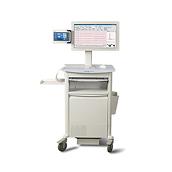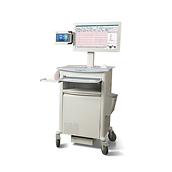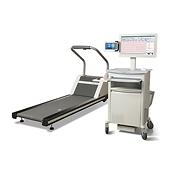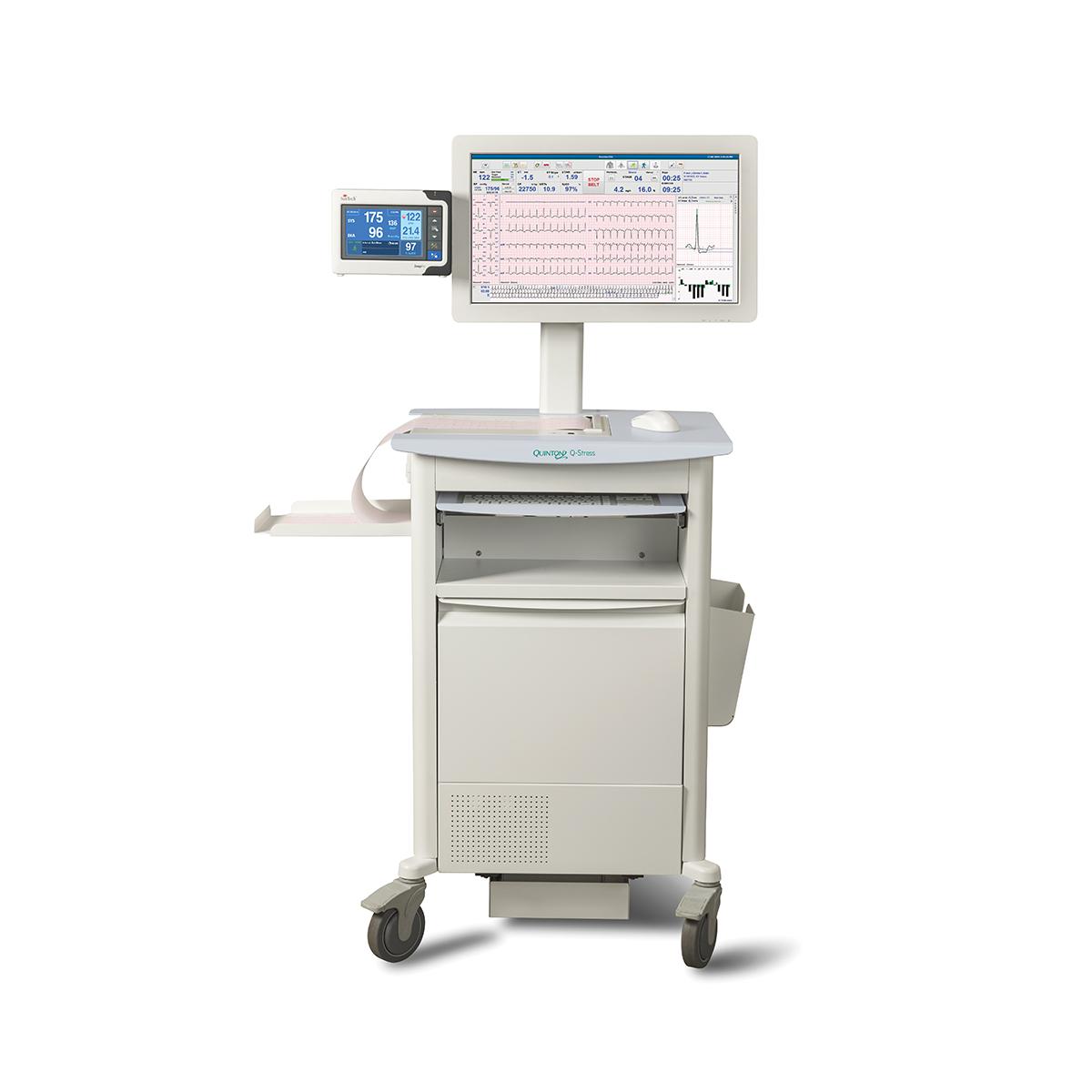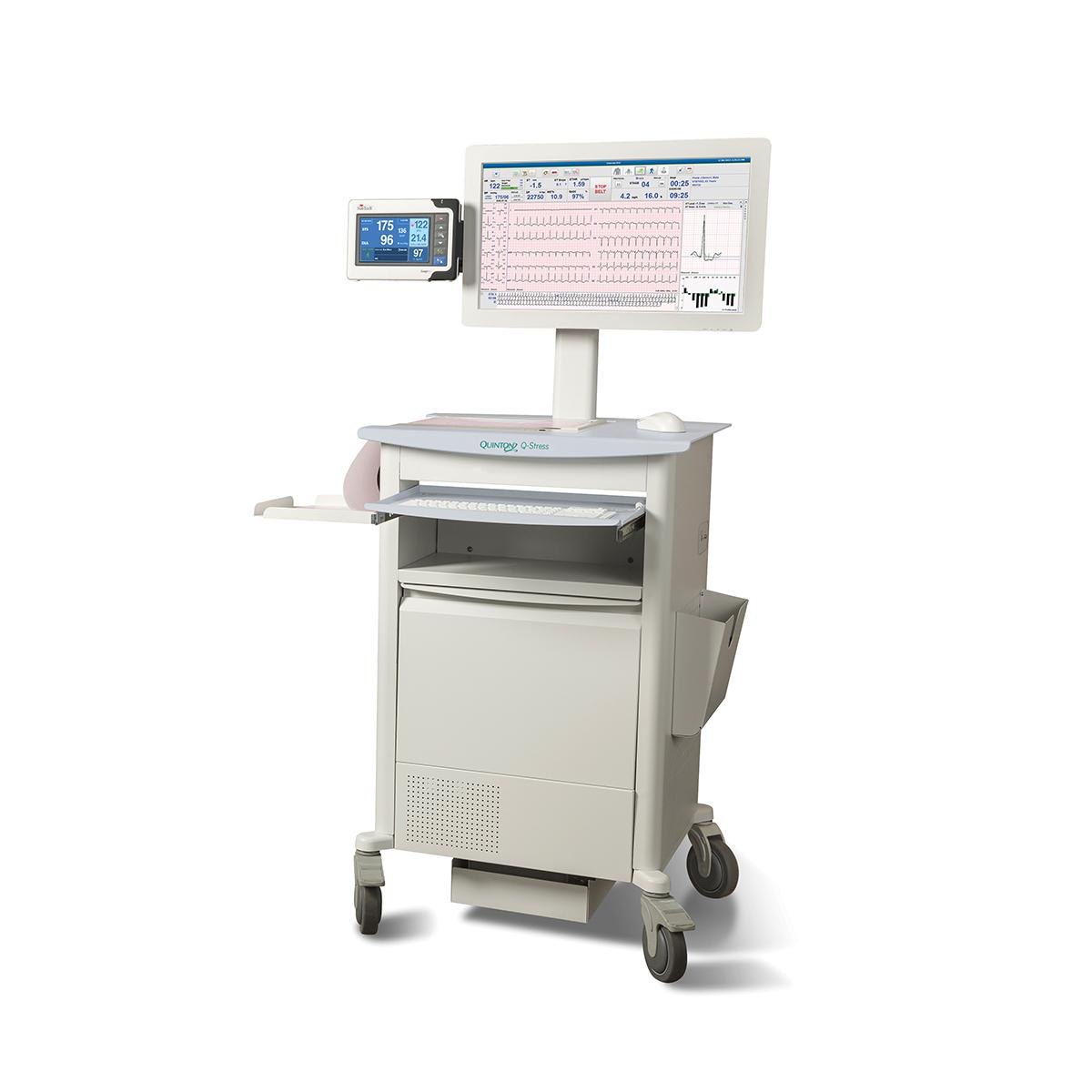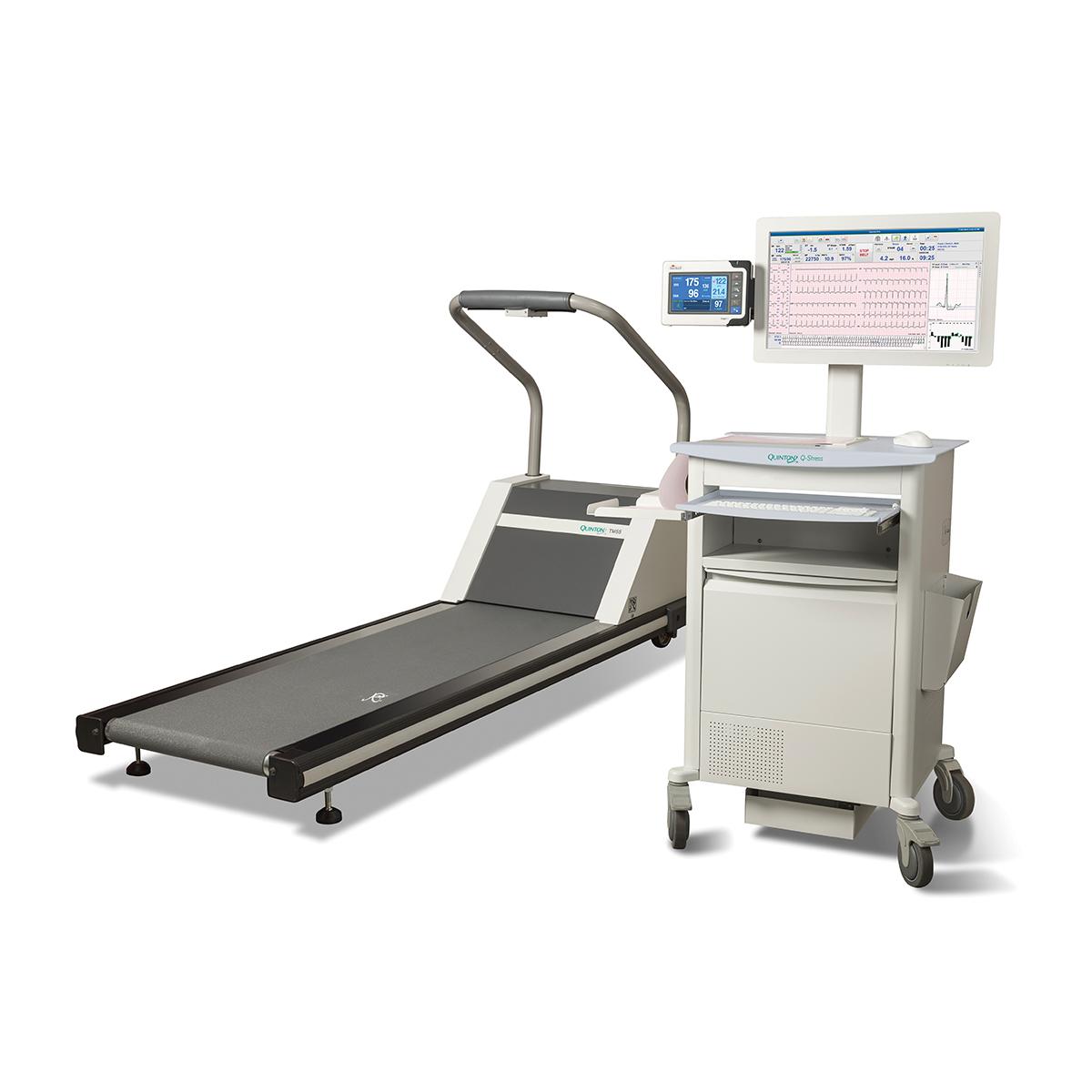The Q-Stress Cardiac Stress Testing System, previously branded as Welch Allyn, Mortara, Burdick and Quinton, is now a Baxter diagnostic cardiology device.
Features
- Experience the simplicity of our intuitive user interface and VERITAS algorithms so you can quickly access diagnostic information and accuracy in real-time ST-segment monitoring and arrhythmia detection
- Source Consistency Filter minimizes noise and baseline artifact
- Real-time full disclosure allows clinicians to examine and label historical ECG data at any point in the exam
- Optional wireless data acquisition is designed to increase workspace flexibility
- Audit trails, data encryption, user authentication and more are designed to help you securely take advantage of connected workflows to promote improved patient care and information access
- Flexible configurations enable over-reads, billing, and data storage that can all be tailored to your workflow
- 12-lead ECG interpretation for adults, adolescents and children
- Communicate bidirectionally using HL7 or DICOM to help reduce manual data errors while providing an electronic, editable report format to your team

Simple
Intuitive menus lead you through test stages in an organized, left-to-right workflow.
Secure
Encryption available to protect the information that matters most.
Connected
Send data to virtually any EMR, ECG management system or PACS with our customizable, scalable platform.

Wireless Freedom
The Wireless Acquisition Module (WAM) helps make exams easier for clinicians and more comfortable for patients with an untethered workflow.

Secure your data at rest and in motion
We’re helping you streamline workflows and promote data security with simple and secure EMR connectivity. Install Q-Stress software on a server and connect to multiple device workstations throughout your network to schedule exams, review full disclosure exams, enter conclusions and electronically sign results.

Accurate insights—all in one user-friendly solution
The Q-Stress Cardiac Stress Testing System supports clinical excellence at the forefront of diagnostic cardiac stress testing.
Configurations
Education & Documentation
Get in the know to get the most value out of your solution.
Product Documentation
-
Customer Letters
keyboard_arrow_downTM55 and TM65 EOL Customer Letter
-
Declaration of Conformity
keyboard_arrow_downMODALITY MGR DICOM CONFORMANCE STATEMENT
-
Installation Guide
keyboard_arrow_downQ-Stress System Installation Manual
-
Service Manual
keyboard_arrow_downQ-Stress, Stress Exercise Testing System, Service Manual
-
Product Release Notes
keyboard_arrow_downProduct Release Notes
Parts & Accessories
Q-Stress Cardiac Stress Testing System Clinical Training Series
Below is a training course that will cover the details you need to operate the Q-Stress device and perform successful exams on a variety of patient types.
Section 3: The WAM (Wireless Acquisition Module)
Instructions on how to pair and utilize the Wireless Acquisition Module (WAM) and understanding what main LED indicators are for.
Section 4: Software Overview and Preparing for Exams
In this detailed instructional video, we will walk through the entire preparation process for a Q-Stress exam and explain the home screen interface.
Section 5: Preparing the Patient for Exams
In this section we will be covering proper patient preparation, including lead placement, and how to connect your patient to the acquisition module.
Section 6: Conducting a Stress Test
Learn the Q-Stress acquisition process including how to start/complete the exam, if you utilize a modality worklist, and what various buttons indicate during the exam.
Section 7: Reviewing/Signing Stress Tests
We will walk through how to interpret and sign off on Q-Stress diagnostic results as well as how to transmit results to your EMR or ECG management system.
Section 8: Q-Stress Clinical Settings
This section will review user preferences and settings such for IT and clinical users and permissions associated with each user type.

